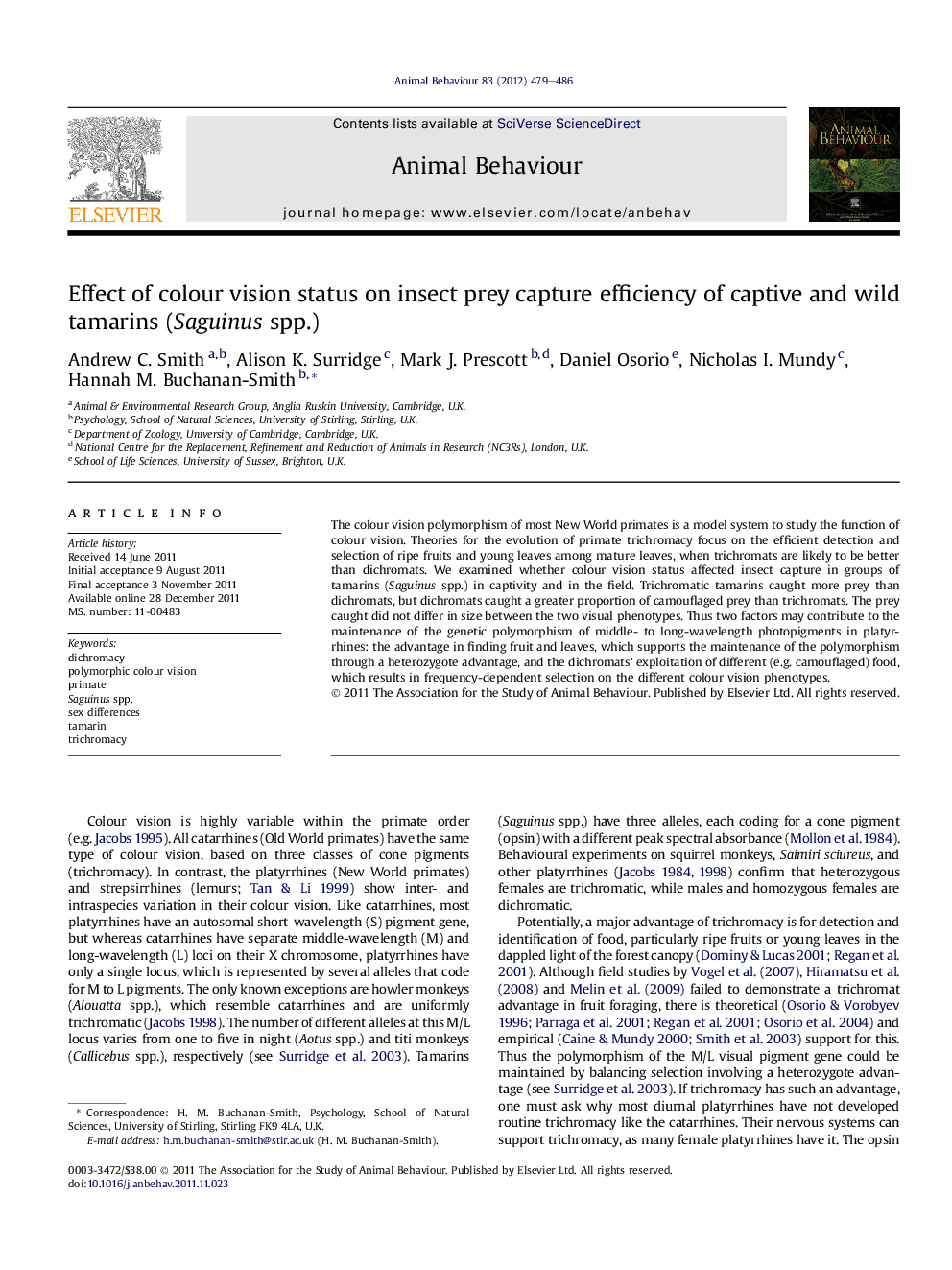| Article ID | Journal | Published Year | Pages | File Type |
|---|---|---|---|---|
| 2416727 | Animal Behaviour | 2012 | 8 Pages |
The colour vision polymorphism of most New World primates is a model system to study the function of colour vision. Theories for the evolution of primate trichromacy focus on the efficient detection and selection of ripe fruits and young leaves among mature leaves, when trichromats are likely to be better than dichromats. We examined whether colour vision status affected insect capture in groups of tamarins (Saguinus spp.) in captivity and in the field. Trichromatic tamarins caught more prey than dichromats, but dichromats caught a greater proportion of camouflaged prey than trichromats. The prey caught did not differ in size between the two visual phenotypes. Thus two factors may contribute to the maintenance of the genetic polymorphism of middle- to long-wavelength photopigments in platyrrhines: the advantage in finding fruit and leaves, which supports the maintenance of the polymorphism through a heterozygote advantage, and the dichromats’ exploitation of different (e.g. camouflaged) food, which results in frequency-dependent selection on the different colour vision phenotypes.
► Colour vision status of captive and wild tamarins (Saguinus) affects insect capture. ► Trichromats catch more prey than dichromats, but prey size does not differ. ► Dichromats catch a higher proportion of camouflaged prey than trichromats. ► Heterozygote advantage may help maintain the genetic polymorphism of colour vision. ► Frequency-dependent selection on colour vision phenotypes may also play a role.
